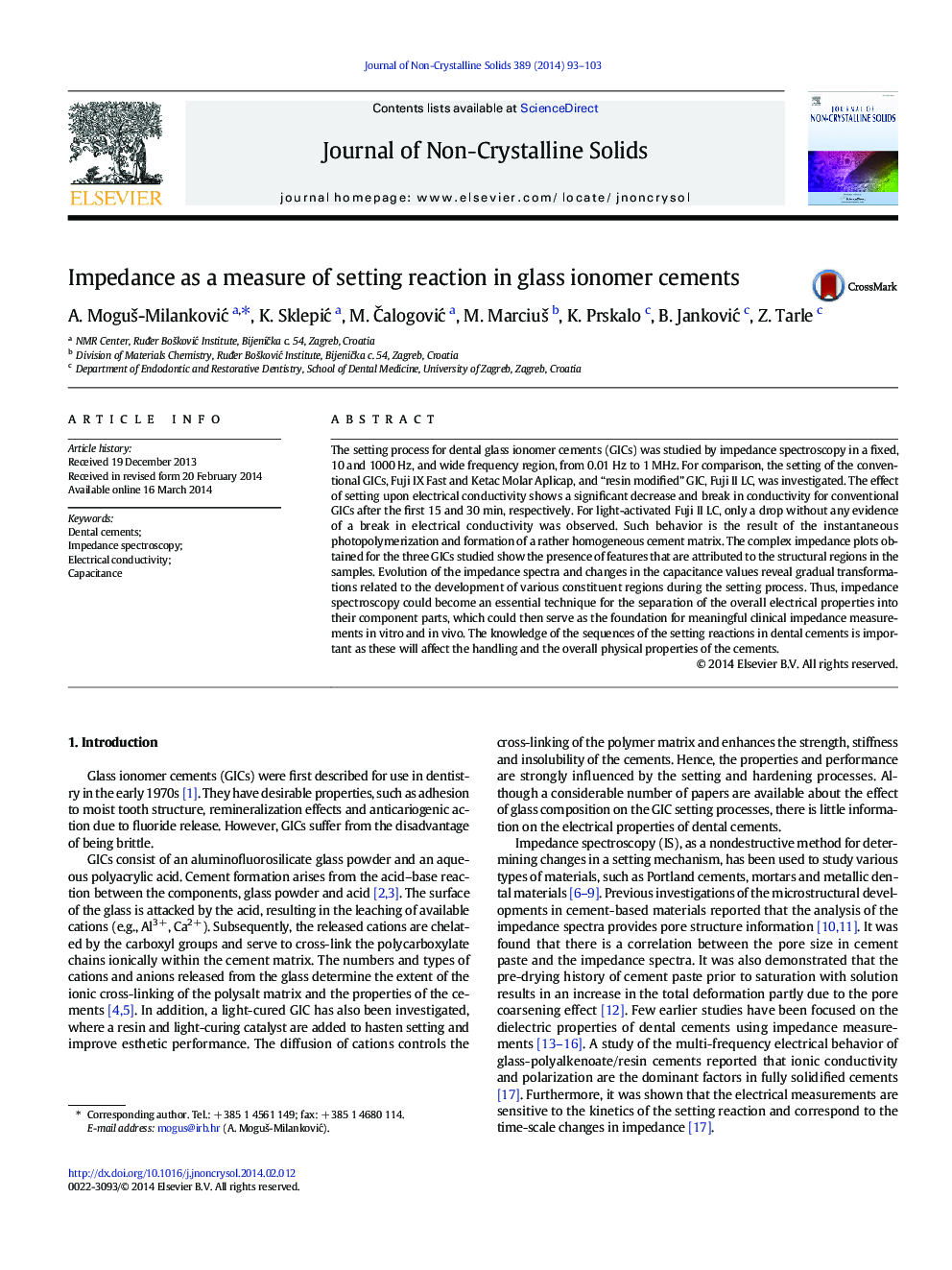| Article ID | Journal | Published Year | Pages | File Type |
|---|---|---|---|---|
| 1481070 | Journal of Non-Crystalline Solids | 2014 | 11 Pages |
•The application of impedance spectroscopy to monitor the progress in setting reactions for glass ionomer cements (GICs).•The detailed analysis of changes in the electrical transport during first hour of setting has been investigated.•The break in conductivity for conventional GICs is due to the changes in microstructure during setting process.•The steep drop in the electrical conductivity for light activated GIC is a result of an instantaneous photopolymerization.
The setting process for dental glass ionomer cements (GICs) was studied by impedance spectroscopy in a fixed, 10 and 1000 Hz, and wide frequency region, from 0.01 Hz to 1 MHz. For comparison, the setting of the conventional GICs, Fuji IX Fast and Ketac Molar Aplicap, and “resin modified” GIC, Fuji II LC, was investigated. The effect of setting upon electrical conductivity shows a significant decrease and break in conductivity for conventional GICs after the first 15 and 30 min, respectively. For light-activated Fuji II LC, only a drop without any evidence of a break in electrical conductivity was observed. Such behavior is the result of the instantaneous photopolymerization and formation of a rather homogeneous cement matrix. The complex impedance plots obtained for the three GICs studied show the presence of features that are attributed to the structural regions in the samples. Evolution of the impedance spectra and changes in the capacitance values reveal gradual transformations related to the development of various constituent regions during the setting process. Thus, impedance spectroscopy could become an essential technique for the separation of the overall electrical properties into their component parts, which could then serve as the foundation for meaningful clinical impedance measurements in vitro and in vivo. The knowledge of the sequences of the setting reactions in dental cements is important as these will affect the handling and the overall physical properties of the cements.
